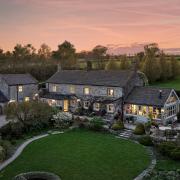Take a stroll away from York city centre to find some of its leafier lanes and more of its history, says Chris Titley
The print version of this article appeared in the February 2012 issue of Yorkshire Life
We can deliver a copy direct to your door – order online here
People tend to think that York’s heritage is all to be found within a street or two of the Minster. But if you break through the walls you find plenty of history in the outer boroughs too. Take Heworth. Once a village, now a leafy suburb about one and a half miles north-east of York city centre, it was the place where Romans built villas and buried their dead.
Heworth Moor has twice been host to civil war rumbles: a skirmish between rival families the Nevilles and the Percys in 1454 is considered by some historians a catalyst for the Wars of the Roses.
More significant still was the meeting on Heworth Moor in June 1642. King Charles I, who had moved his court to York, summoned the lords and gentry to the moor to drum up support in his row with Parliament.
It was quite a gathering. ‘Above 70,000 people assembled at the time and place appointed,’ wrote William Hargrove in his History of York, published in 1818. ‘The king attended, accompanied by 150 knights, with their esquires and gentlemen, and guarded by 800 foot soldiers.’
Charles was greeted with three loud huzzas, William notes. But when Lord Fairfax attempted to give him a petition calling on the king to listen to Parliament, he tried to avoid taking it, and Fairfax had to stuff it in his saddle. The first battle of the English Civil War followed in October.
Heworth grew from a hamlet into something more substantial in the Victorian era, and many of its finest villas date from that time. According to Avril Webster’s book Looking Back at Heworth, 19th century residents included telegraphists, commercial travellers, a straw hat dealer and three-time Derby winning jockey Simon Templeman moved in to East Parade in 1876.
Now Heworth began to grow commercially. One of the best known shops today is Londons, the newsagent and toyshop on Mill Lane. It was built as a private dwelling and used as a school in the 1920s, it was bought by Albert London and his son Frederick in 1930 and remains a hub of Heworth to this day.
The main road from the borough into York, Heworth Green, is the birthplace of Dame Judi Dench. It is also home to one of several busy pubs in Heworth, the Shoulder of Mutton. Another, the Walnut Tree, was built as a private house and only received its licence when the pub across the road in Heworth Village, the Britannia Inn, closed in the 1960s.
East Parade, with the impressive Holy Trinity Church on one corner, offers a bustling line of shops, including a busy post office. It’s the winner of a Service with a Smile award. Customers who nominated the branch praised the staff including postmaster Kenneth Slee for their courteousness and patience.
He describes the post office as the heart of Heworth. ‘It’s a good area with loyal customers. We endeavour to give a good service, the same as we’d expect if we went into a post office,’ he said. ‘We’re mindful of our elderly customers, and the new technology. We try to be as helpful as we can.’
Kenneth, who has run the post office for nine years, enjoys the job – ‘I’ve got excellent staff’ – and the area. ‘There’s a wide range of shops. Access to the town centre’s good, either on foot or by bus. And there’s a park, Glen Gardens.’
Heworth does well for open spaces.
As well as Glen Gardens there’s Monk Stray, pleasant walks along Tang Hall Beck, a golf club and the thriving Hempland Lane allotments.And adding to the flora and fauna are two florists. One is found in a converted tram shelter near the stray. The other, Busy Lizzie in Heworth Village, has been run for 20 years by Liz Smithson who was born and brought up in Heworth.
‘It’s a lovely place. There are a lot of characters in the village,’ she said.‘Heworth hasn’t changed that much. It’s built up. But we have the stray, that’s lovely, and the park too.’
Among Heworth’s residents are two published historians, Jane Burrows and Joy Crawshaw. Jane, a librarian, has lived here for almost 50 years. ‘It’s just a very pleasant place to live,’ she said. ‘It has a nice feel about it. It’s very easy to get into town from here. There’s a good bus service, good local shops, the stray.’
‘The service in the shops is very good,’ said Joy, a retired teacher. ‘The fishmonger used to come round; Ringtons Tea comes round once a fortnight, and there’s a milkman as well, which is unusual now.’
Getting there: Heworth is just off the A1036 north east of York city centre, which you can join from the ring road
Where to park: There’s a pay and display car park and on-street parking along East Parade
What to do: Play a game of tennis in Glen Gardens, or just stroll through the park. Visit the shops in East Parade and go for something to eat or drink at one of the caf�s and pubs


























